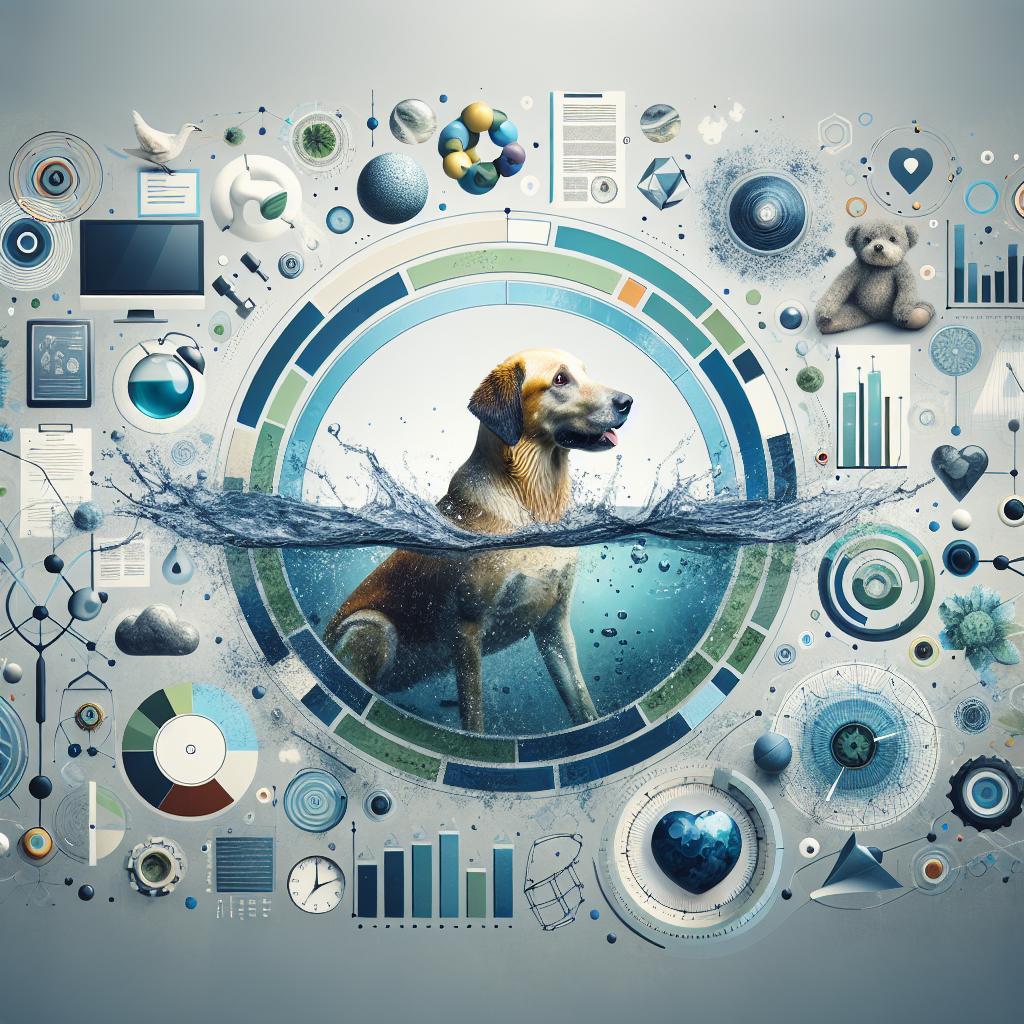How to Train Your Dog to Be Calm Around Water: A Guide for Peaceful Paws
For many dog owners, few sights are as heartwarming as a pet frolicking by the water’s edge, splashing joyfully among gentle waves. Yet for some dogs, water can evoke feelings of anxiety or panic, leading to a reluctance to enjoy aquatic outings. If you’re eager to transform your pup from a hesitant bystander to a tranquil water enthusiast, you’ve landed in the right place. In this article, we’ll explore effective methods and insightful tips to train your dog to remain calm around water. Whether it’s a lake, a pool, or the ocean’s shoreline, fostering a relaxed attitude toward water can enhance your dog’s outdoor experiences while ensuring their safety. Let’s embark on a journey that promises not only peace of mind but also the delightful companionship of a relaxed, happy canine by your side.
Understanding Your Dogs Water Anxiety
Many dogs experience anxiety around water, which can stem from a variety of reasons. Fear of the unknown, negative past experiences, or even a lack of exposure can contribute to their unease. For some dogs, loud sounds associated with water, like splashes or the roar of a wave, can create a feeling of vulnerability. Others may not have had the chance to develop a positive relationship with water, leading to a reluctance to engage with it. Understanding these triggers is essential to helping your furry friend overcome their fears. Recognizing signs of anxiety—such as trembling, whimpering, or even attempts to escape—can provide insight into your dog’s unique experiences and concerns.
To effectively address this anxiety, consider the following strategies:
- Gradual exposure: Introduce your dog to water in a calm, controlled manner, starting from shallow areas and gradually moving deeper.
- Positive reinforcement: Use treats and praise to reward your dog for brave behavior, creating a positive association with water.
- Water play: Engage in fun activities such as floating toys or gentle splashes to make water a more enjoyable experience.
- Professional help: If anxiety persists, consult a professional trainer or behaviorist who specializes in fear-based reactions.
In addition to these techniques, monitoring your dog’s body language is crucial. The table below outlines some common signs of discomfort and calmness:
| Signs of Discomfort | Signs of Calmness |
|---|---|
| Trembling or shaking | Relaxed posture |
| Excessive panting | Calm breathing |
| Whining or barking | Sitting or playing |
| Trying to escape | Wagging tail |
By being aware of their signals and approaching their training with patience and compassion, you can help your dog build confidence in the water and enjoy all the fun that aquatic activities have to offer.
Building Positive Associations with Water
Creating a positive environment around water begins with engaging activities that encourage exploration without pressure. Start by introducing your dog to shallow water in a safe, controlled setting. Use toys and treats to entice them, allowing them to associate water with fun. Gradually increase their exposure by splashing around, demonstrating how enjoyable water play can be. Remember to celebrate small victories, showering them with praise when they exhibit curiosity or confidence near water. This establishes a strong foundation for a trusting relationship with this element.
To reinforce these positive experiences, consider incorporating a structured routine. Design a simple schedule that includes frequent visits to the water source, ensuring these moments are enjoyable and stress-free. The following table outlines key strategies for creating upbeat interactions:
| Strategy | Description |
|---|---|
| Positive Reinforcement | Always reward calm behavior with treats or affection. |
| Gradual Introduction | Start in shallow areas and slowly move to deeper water. |
| Safe Equipment | Use life vests for safety and to boost confidence. |
| Consistent Exposure | Regular visits help normalize and reduce fear of water. |

Gradual Exposure Techniques for Water Comfort
To help your dog build confidence and comfort around water, it’s essential to use gradual exposure techniques that cater to their pace. Start by introducing your pet to water in a controlled and safe environment, like a shallow kiddie pool or a calm area at the beach. Allow your dog to observe the water while keeping a healthy distance at first. Gradually encourage them to approach it by tossing their favorite toys closer to the edge. This technique not only piques their curiosity but also creates a positive association with the water. Consider these steps:
- Begin with dry land activities that mimic water, such as sprinkling a hose or using a spray bottle.
- Hold play sessions near the water source so that your dog associates water with fun.
- Slowly introduce splashing sounds or subtle water movements to desensitize them to the noise.
As your dog becomes more comfortable, you can begin to gently introduce them to deeper water, always ensuring their safety with a doggy life jacket if necessary. Maintain a calm demeanor throughout these experiences, providing plenty of praise and treats to reward bravery. Remember that patience is key—each dog will progress differently. Monitor their reactions and adjust your approach as needed. Here’s a simple guide to what your dog might experience at different exposure levels:
| Exposure Level | Activity | Goal |
|---|---|---|
| Initial | Watching water from a distance | Building curiosity |
| Intermediate | Walking on the water’s edge | Creating a safe zone |
| Advanced | Entering shallow water | Encouraging exploration |

Reinforcing Calm Behavior Around Water
Creating a calm environment for your dog around water is essential for promoting positive behavior during water activities. Start by introducing your dog to water in a controlled and safe setting, such as a calm lake or a kiddie pool. This will help them become familiar with water without feeling overwhelmed. Use positive reinforcement techniques to reward your dog for calm behavior, like sitting quietly near the water’s edge or slowly wading in. This could include offering treats, praise, or favorite toys to encourage relaxation and build their confidence.
Establishing a routine can also aid in reinforcing serenity around water. Schedule regular visits to water spots while gradually increasing exposure. During these outings, keep the atmosphere calm by minimizing loud noises and sudden movements. Encourage mindful walking or gentle play near the water to help your dog associate these locations with tranquility rather than excitement. Don’t forget to observe your dog’s body language; if they show signs of anxiety or distress, take a step back and provide comfort or distance as needed. A relaxed dog will not only enjoy the water more but will also have a more enjoyable experience overall.
Q&A
Q: Why is it important for my dog to be calm around water?
A: Teaching your dog to be calm around water can ensure their safety and enhance your activities together, whether it’s a trip to the beach or a lakeside picnic. A calm dog is less likely to panic, which can prevent accidents for both your pet and other people around water.
Q: At what age should I start training my dog to be calm around water?
A: While it’s best to start this training early—ideally during puppyhood—dogs of all ages can learn to be calm around water. The key is patience and positive reinforcement, tailor-fitting your approach to your dog’s breed, personality, and previous experiences with water.
Q: How can I introduce my dog to water without overwhelming them?
A: Begin with a gradual introduction to water. Start with shallow puddles or a kiddie pool where your dog can play without feeling submerged. Each time they approach, offer encouragement and treat rewards to associate water with positive experiences.
Q: What techniques can I use to keep my dog calm around water?
A: Desensitization is a powerful technique. Use gradual exposure, starting from a distance and slowly moving closer as they become more comfortable. Employ commands like “stay” or “settle” while near water, reinforcing these with treats. Practicing relaxation exercises at home can also help.
Q: Should I consider using any tools or equipment during training?
A: Depending on your dog’s temperament, life jackets or harnesses can provide extra safety and security when introducing them to open water. Always ensure your dog is comfortable wearing these before venturing into water situations.
Q: What signs should I watch for that indicate my dog is stressed or anxious about water?
A: Pay attention to body language. Signs of stress can include excessive panting, whining, pulling back, or trying to escape. If you notice these behaviors, take a step back and give your dog a break before trying again.
Q: How can I reinforce calm behavior once my dog is comfortable around water?
A: Consistency is key! Continue to reward your dog for calm behavior and incorporate regular outings to bodies of water. Practice calm commands and encourage them to explore at their own pace, mixing in play to keep the experience enjoyable.
Q: What if my dog has a fear of water?
A: If your dog has a fear of water, it’s essential to proceed slowly. Avoid forcing them into water situations and instead, focus on building confidence. Start with very shallow, non-threatening environments and move at a pace they’re comfortable with, using treats and praise to support their progress.
Q: Can I train my dog to enjoy swimming as well?
A: Absolutely! Once your dog is calm and comfortable near water, you can introduce swimming gradually. Use a favorite toy to entice them into the water and always be there to encourage and support them, ensuring the experience is both fun and safe!
Q: How long does it typically take to train a dog to be calm around water?
A: The time can vary widely depending on your dog’s personality and prior experiences. Some dogs may adjust within a few sessions, while others may take several weeks. The most important factor is to remain patient and consistent throughout the process.
These questions and answers should help guide dog owners in training their pets to embrace water with confidence, ensuring a safe and enjoyable experience for all!
Future Outlook
teaching your dog to remain calm around water can transform not only their experience but also yours. By implementing consistent training techniques, positive reinforcement, and gradual exposure, you will create a sense of security and confidence for your furry companion. Remember, patience is key; every dog learns at their own pace. Celebrate the small victories along the way, and soon enough, you’ll create a bond that allows your dog to enjoy splashes, waves, and pools with joy instead of anxiety. With some effort and understanding, your dog will not only embrace water but thrive in it, making future adventures by the water more enjoyable for both of you. So grab those treats, hit the shoreline, and embark on this journey to calm waters together!

